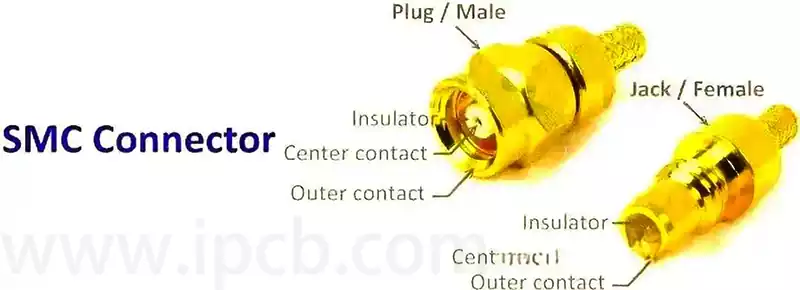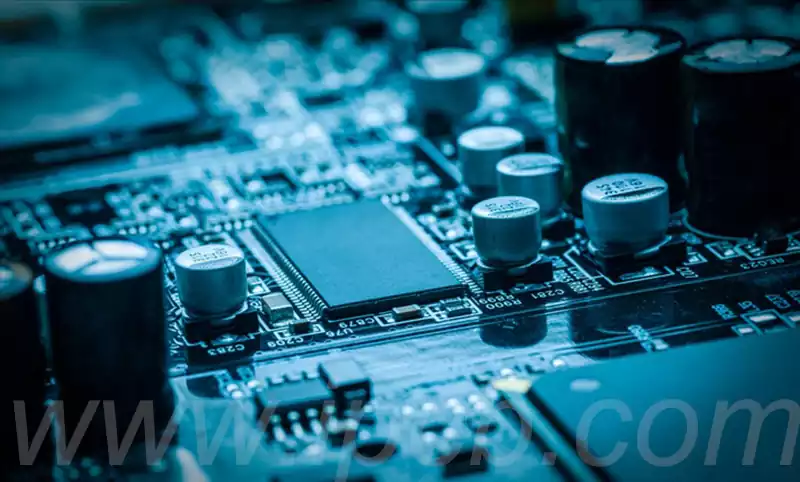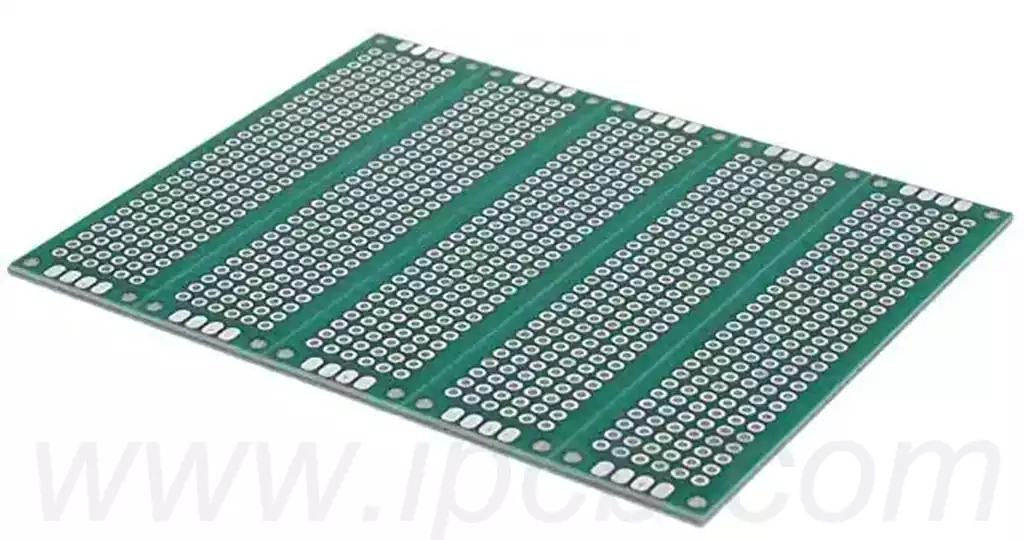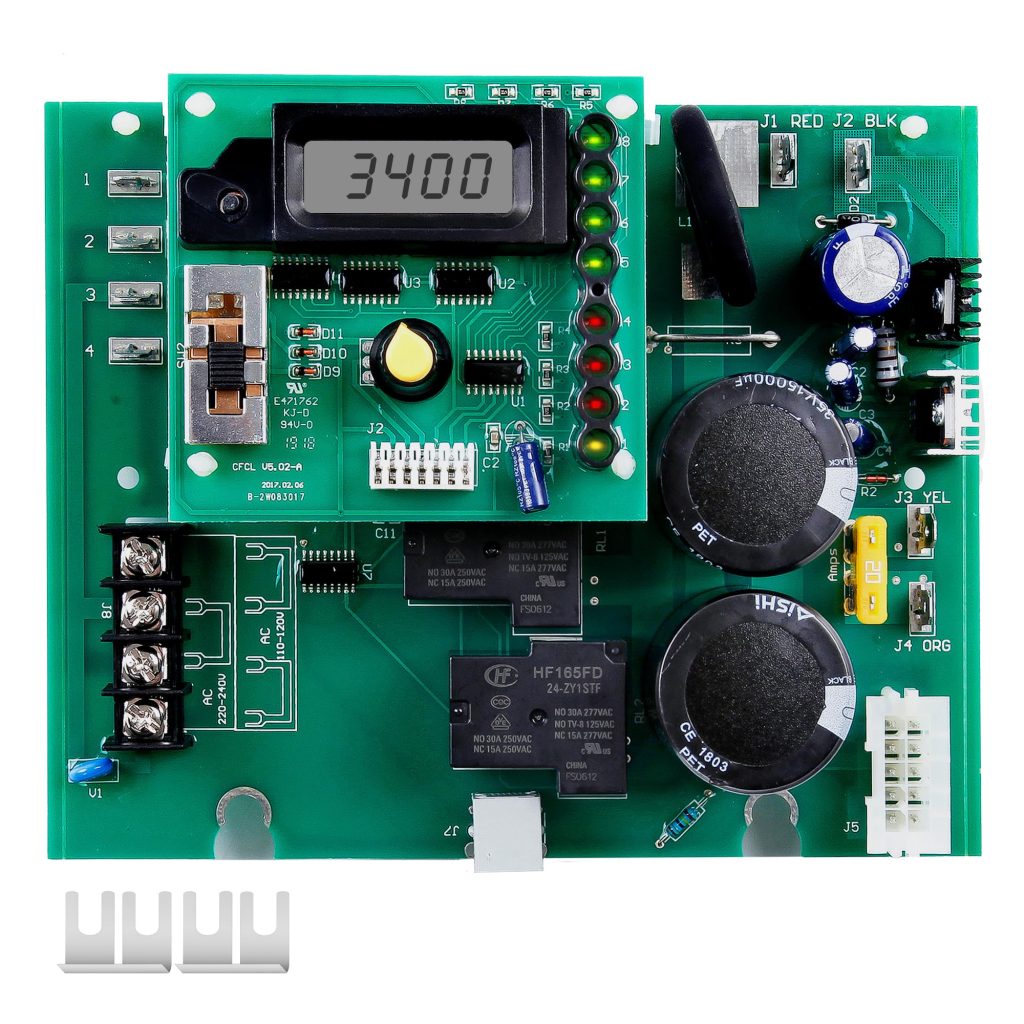RF connectors are electrical connectors used for transmitting radio frequency signals. They are also referred to as coaxial connectors within the industry, as RF connectors are typically connected to coaxial cables and also have a coaxial structure.
Classification of RF connectors:
By connection interface structure:
Threaded connection: Uses series such as SMC, SMA, TNC, N, UHF, 7/16, and 4.1/9.5, suitable for test equipment, military, and telecommunications equipment.
Bayonet-style: Uses series such as BNC and MHV, suitable for reliable connections and quick plug-and-play, commonly used in test equipment and military equipment.
Push-in: Enables very fast connection and disconnection, with a reliable structural design, commonly used in small connectors such as the MCX and SMB series.
Push-in self-locking: Features a unique self-locking mechanism for high reliability, typically used in high-density small connectors such as the 1.0/2.3 and 1.6/5.6 series, offering rapid insertion/removal and reliable locking.
Slide-in: Used in various DIN multi-terminal connectors, commonly used for connections on PCB boards.
Classified by size
Standard: UHF, N, 7/16, 7mm
Small: BNC, TNC
Ultra-small: SMA, SMB, SMC, MCX, BMA, SAA, 3.5mm
Micro: SSMA, SSMB, MMCX, 2.4mm, K (2.92mm), 1.85mm, 1mm
Classified by frequency:
Audio: Below 20KHz
Video: 30MHz to below 500MHz
Radio: 500MHz to 300GHz
Fibre Optic: 167THz to 375THz

Connectors used in the radio frequency band are called RF connectors.
Common RF connectors and their features and applications:
SMA connectors
Features:
A compact threaded connector with a compact design and high cost-effectiveness. It has a wide frequency coverage range, typically up to 18 GHz, and high-performance models can even exceed 26.5 GHz. It offers excellent electrical characteristics, such as low standing wave ratio (SWR) and high reliability.
Application Areas:
Widely used in compact wireless devices, RF modules, and test instruments, such as WiFi routers, GPS devices, and spectrum analysers. Especially suitable for space-constrained applications, such as antenna interfaces on PCB boards.
N-type connector
Features:
Features a robust threaded connection with high mechanical strength, suitable for handling high power. Typically covers frequencies up to 11GHz, with high-end models supporting 18GHz or higher. Offers excellent waterproofing and environmental adaptability.
Application areas:
Commonly used in base station antennas, microwave communication equipment, and radar systems, suitable for outdoor or high-power transmission environments, such as mobile communication base station feeder connections.
BNC Connector
Features:
Features a bayonet-style structure for quick and easy plug-and-play, with good connection stability. Typically has a frequency upper limit of 4GHz, with some models reaching 6GHz. Simple structure and lower cost.
Application Areas:
Widely used in video transmission equipment (such as surveillance systems), test instruments (such as oscilloscopes), and amateur radio. Especially suitable for frequent plug-and-play and budget-constrained scenarios.
TNC Connector
Features:
Similar in appearance to BNC but uses a threaded connection for improved vibration resistance. Frequency range can reach up to 11GHz, with overall electrical performance superior to BNC. Excellent waterproof and dustproof performance.
Application Areas:
Suitable for environments requiring high reliability and vibration resistance, such as aerospace and military communications. Also commonly used in outdoor wireless base stations and microwave links.
UHF Connector (PL-259/SO-239)
Features:
Features a threaded connection for a robust structure capable of withstanding hundreds of watts of high power. Has a lower frequency range, typically not exceeding 300MHz, primarily targeting low-frequency applications. Cost-effective with strong compatibility.
Application Areas:
Widely used in amateur radio, radio stations, and low-frequency communication equipment, such as ham radio antennas and RF interfaces for traditional communication devices.
MCX Connector
Features:
Ultra-compact push-in connector with smaller size and lighter weight, supporting frequencies up to 6GHz, ideal for high-speed data transmission. Easy to connect but with slightly lower mechanical strength.
Application Areas:
Widely used in small electronic devices such as mobile phones, tablets, and wireless modules, particularly suitable for antenna interfaces on space-constrained PCB boards.
MMCX Connector
Features:
A micro-sized push-in connector smaller than MCX, featuring a locking mechanism. Supports frequencies up to 6GHz with excellent electrical performance, suitable for high-density layouts.
Application Areas:
Primarily used in micro-sized wireless devices, RF modules, and wearable devices, such as Bluetooth headphones and smartwatch antennas.
F-Type Connector
Features:
Simple structure, low cost, and threaded connection. Frequency range is typically limited to 1GHz or below, suitable for low-frequency signal transmission, and easy to install.
Application Areas:
Widely used in cable television (CATV), satellite television systems, etc., such as RF interfaces for home television antennas and set-top boxes.
SMB Connector
Features:
Compact push-in connector for quick connection without rotation. Frequency range up to 4GHz, suitable for high-speed signal transmission, lightweight but with average vibration resistance.
Application Areas:
Used in small RF devices, test instruments, and communication modules, such as wireless sensors and internal connections in small base stations.
SMC Connector
Features:
Similar to SMB but uses threaded connections for enhanced mechanical stability. Frequency range up to 10GHz with superior electrical performance. Compact size, suitable for environments requiring a secure connection.
Application Areas:
Widely used in aerospace and military fields, as well as high-frequency test equipment and microwave components, suitable for applications requiring high connection reliability.

Key Factors in Selecting RF Connectors
The frequency range must match the system’s operating frequency to ensure signal transmission quality.
Power capacity should be selected based on the transmission power to avoid overheating or damage.
Mechanical structure considerations include connection methods (threaded, bayonet, push-in), vibration resistance, and waterproof performance.
Size and installation should be selected based on the available space in the equipment; for example, small devices are suitable for MCX or MMCX connectors.
Environmental adaptability: For outdoor applications, choose waterproof and corrosion-resistant connectors (e.g., N-type, TNC).
Cost: Balance performance and cost requirements; for example, consumer products can use SMA or BNC connectors, while high-end equipment should opt for high-performance models.
The selection of RF connectors should comprehensively consider frequency, power, structure, and usage environment to ensure stable and reliable signal transmission. Reasonably matching connector types according to different application requirements can effectively enhance device performance and user experience. With technological advancements, RF connectors will become more compact and high-frequency, meeting the demands of more complex scenarios.



